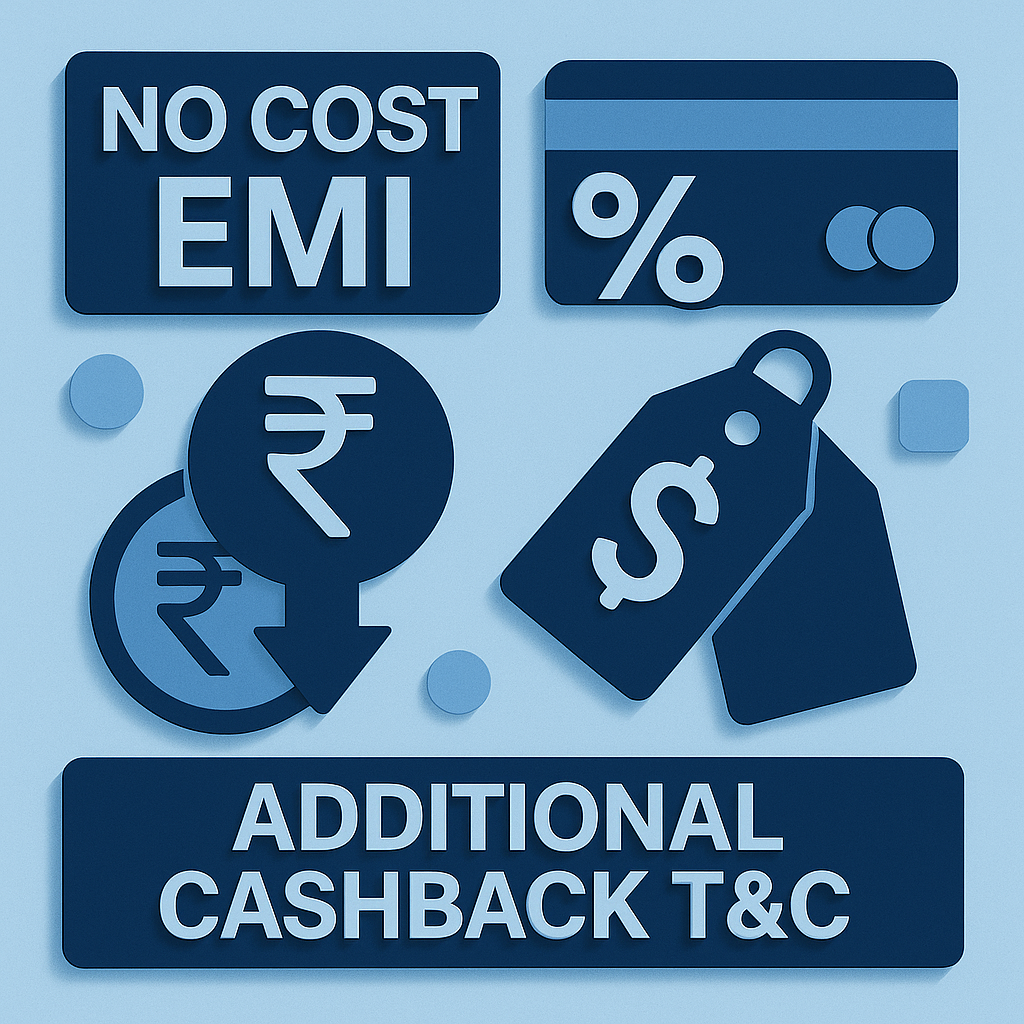Physical Address
304 North Cardinal St.
Dorchester Center, MA 02124
Physical Address
304 North Cardinal St.
Dorchester Center, MA 02124

We can be frank here. Who doesn’t appreciate a great promotional offer? If we are honest, each one of us wishes to buy something at the moment and pay for it later down the road. Fulfilling this desire is why terms like “No Cost EMI” and “Additional Cashback” seem to be everywhere today (even supported by certain shops like Amazon and Flipkart or maybe even banks). At face value, they tend to grab people’s attention with a “Wow, sounds fantastic” reaction. Towards that end, it is vital to grasp what these deals entail before rushing into them.
What is dire is that for many straining with finances, ‘Zero Cost EMI’ bears the impression ‘splitting payments into smaller chunks—monthly installments’ comes with no extra interest. And cashback—money returned post purchase—strikes sound plausible. However, those win-win scenarios include phrases expecting additional scrutiny.
With all this in mind, let’s get started.
No Cost EMI (Equated Monthly Installment) is a payment option that allows you to buy products and pay for them in monthly installments without any extra interest or hidden charges. Unlike regular EMIs, where interest is added to the principal amount, No Cost EMI ensures you pay only the actual price of the product, split equally over a defined tenure. This option is typically offered on credit cards or through select finance partners.
To put it simply, No Cost EMI is a payment plan where you pay in increments without accruing extra fees or extra interest. For example, with a ₹24,000 product and choosing a 6 month EMI, you pay ₹4,000 each month. That’s pretty cool right?
No Cost EMI works by dividing the product’s total price into equal monthly installments, without adding interest. There are typically two ways this is offered: either the seller gives a discount equal to the interest amount charged by the bank, or the interest is borne by the brand or retailer. The customer ends up paying only the actual product price over the EMI duration
In some cases, you might miss out on discounts that are offered for upfront payments. as some banks may still charge a processing feeSo technically, it’s not always ‘free’.
Who doesn’t love getting money back after a purchase? Cashback is like a mini reward for spending, and it feels good. But not all credit card cashback offers are created equal. Whether it’s ₹500, ₹5,000, or a percentage of your total purchase, cashback offers look like a bonus.
But again, the devil is in the details.
There are two main types of credit card cashback—instant cashback and credited cashback.
Sometimes, the cashback is instant—it shows up right away as a discount. Other times, it’s credited later, maybe after 30 or 60 days, and only if you meet certain conditions. And that’s where it gets tricky. You might need to use a specific no cost emi card, purchase above a certain amount, or stick to a particular EMI plan. Miss one condition, and poof! No cashback.
Also, with combined offers like No Cost EMI plus cashback, the rules can get even more complex. You might need to pay with a certain bank card, avoid canceling your order, and make sure you pay every EMI on time. It’s a lot to keep track of.
Cashback T&Cs You Should Read Before You Spend
This is where most get caught unawares. Cashback deals generally have an entire list of conditions. For instance:
•You may be required to use a special credit or debit card to avail.
•There may be a minimum purchase amount—let’s say, ₹10,000 and above.
•You might be required to choose a specific EMI plan, like only 6 months.
•Cashback may not be applicable if you cancel the order, return the item, or even skip an EMI payment.
•In a few instances, you’ll receive the cashback only after paying off the entire EMI tenure.
So now that you know the tricks behind the scenes, how do you still benefit from No Cost EMI and cashback offers?
People often get confused between Easy EMI and No Cost EMI because of how similar they sound, but they work quite differently behind the scenes. The main difference lies in whether you pay interest and how the overall cost is structured. Here’s a breakdown:
Let’s say a phone costs ₹30,000:
To know more you can read this blog on What is easy EMI?
First, always read the full offer details—yes, even the small print. Compare the price you’re paying with and without EMI. Make sure you’re eligible for the offer, and if cashback is promised, set a reminder to follow up. And never stretch your budget just to get a deal.
Ultimately, these deals can be fantastic. They truly can assist you in purchasing something you require without taxing your purse. But only if you utilize them sensibly. Consider them tools—not tricks. Be smart, be educated, and shop with ease.